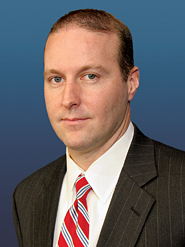With the Chicago Board Options Exchange’s Volatility Index not closing above 13.75 for the past year, many in the industry are left scratching their heads wondering whether low volatility is the new reality for the US equities market.
“Whenever something is the new norm, I know it is about to change,” Chris Concannon, president and COO at the CBOE, told the audience at Sandler O’Neill’s Global Exchange and Broker Conference in Midtown Manhattan last week. “I continue to hear that theme that this low level of volatility is the new norm. It’s not, and it’s going to change.”

“I don’t think we are out of the world of high volatility,” agreed fellow speaker Rocky Fishman, equity derivatives strategist at Deutsche Bank Securities.
However, Fishman also noted that the nature of volatility has changed.
“We are not going to be in a world where you have a volatility regimes that last for a year or two anymore,” he added. “The volatility cycle is compressed, and you are going to see high and low volatility more often than we did before the financial crisis.”
Driving the change is how electronic markets distribute information to their participants quicker as well as the further adoption of machine learning, explained Nicholas Colas, chief market strategist at Convergex.
“Think of the self-driving car market,” he suggested. “A person can drive a car pretty well with fairly low error rates and a human-dominated market can do the same. As you infuse artificial intelligence and information into a bigger algorithm to drive market and asset prices, volatility should collapse over the next two, three, four, 10, or 20 years in the same way self-driving cars have fewer crashes than those driven by humans.”
Daniel Coleman, CEO of Knight Holdings, thought it would be wrong to divorce human actors for the market and that the low-volatility environment is nothing new as he cited Nick Leeson.
“He pinned the Nikkei futures in 1994, and they didn’t move and traded with a three volatility for nine months,” he said. “Then the Kobe earthquake happened, volatility blew up, and it took down Barings Bank and a bunch of other people. There is an overarching human element to this: If I can take on risk and be compensated for it and not be penalized, I’m going to keep on doing that until I get hurt.”
Speaking during the conference’s lunch, Ken Griffin, CEO of Citadel, also attributed the current low-volatility environment to the interventionalist policies that central banks around the world have pursued for nearly a decade.
“That is the dominant effect on the markets, hands down,” he said.
Griffin also sees stat-arb traders contributing to low volatility by continuing to chase stock reversals.
“This community is pushing stock prices back to where they recently were,” he said
Eric Noll, former president and CEO of Convergex and who spoke earlier, sees active asset managers contributing to low-volatility as well since it is difficult for them not to participate in the markets.
“If you feel very strongly that the market is over-valued and you go to cash, you are going to show a massive amount of underperformance,” he said. “If the market continues to bleed upward however slowly that happens, then you are going to get outflows. So what ends up happening is that active managers tend to stay invested either they become closet indexers or they just stay in their holdings and hope they can get out of the way when the bad stuff happens.”
Most of the conference speakers agreed that volatility will return to the markets, but remain unsure when it will happen.
“It is very much a function of what the equities market looks like, which are a function what the economic conditions are,” said Deutsche Bank Securities’ Fishman. “Part of this exercise is figuring out when we are going to have a recession. That is something that is very difficult to figure out.”



